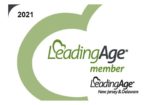Individual Tax Changes In The “2017 Tax Cuts And Jobs Act”
December 21, 2017 | by Gary Botwinick, Matthew RheingoldOn December 15, the Conference Committee—having reconciled and merged the differing House and Senate provisions into a single piece of legislation—released its Conference Report on the “Tax Cuts and Jobs Act” (the “Act”).
Many of the individual tax provisions in the Act are temporary (as opposed to the business provisions, which generally are permanent), meaning that most of the individual provisions become effective on January 1, 2018, but will expire by December 31, 2025 (unless renewed).
- Tax Rates. Seven tax rates apply for individuals: 10%, 12%, 22%, 24%, 32%, 35%, and 37%, with the highest rate (37%) beginning at $500,000 for individuals and $600,000 for married filing jointly.
- Standard Deduction. The standard deduction is increased to $24,000 for joint filers, $18,000 for head-of-household filers, and $12,000 for all other taxpayers.
- Personal Exemption. The personal exemption is suspended by reducing the exemption amount to zero.
- Kiddie Tax. Taxable income of a child attributable to earned income is taxed under the rates for single individuals, and taxable income of a child attributable to net unearned income is taxed according to the brackets applicable to trusts and estates.
- Capital Gain. The adjusted net capital gain of an individual is taxed at maximum rates of 0%, 15%, or 20%, with the maximum 20% rate beginning at $479,000 for joint returns and $425,800 for single filers.
- Excess Business Loss. “Excess business loss” (excess of business deductions over (business income plus $500,000 for joint filers) ($250,000 for single filers)) is disallowed and is instead carried forward and treated as part of the taxpayer’s net operating loss (NOL) carryforward in subsequent tax years.
- Casualty and Theft Loss. The personal casualty and theft loss deduction is suspended, except for personal casualty losses incurred in a Federally-declared disaster.
- Child Tax Credit. The child tax credit is increased to $2,000, and the amount of the credit that is refundable is increased to $1,400 per qualifying child. Phaseouts, which are not indexed for inflation, will begin with adjusted gross income of more than $400,000 for married taxpayers filing jointly and more than $200,000 for all other taxpayers.
- State and Local Property and Income Tax. Taxpayers may claim a deduction of up to $10,000 ($5,000 married filing separately) for the aggregate of (i) state and local property taxes and (ii) state and local income taxes.
- Home Mortgage Interest. The deduction for interest on home equity indebtedness is suspended (even for existing home equity loans), and the deduction for mortgage interest is limited to underlying indebtedness of up to $750,000 ($375,000 for married taxpayers filing separately).
- Medical Expenses. For tax years beginning after Dec. 31, 2016, and ending before Jan. 1, 2019, medical expenses are deductible to the extent that the expenses, as unreimbursed by insurance, exceed 7.5% of adjusted gross income (AGI). The 10% of AGI threshold applies after 2018.
- Charitable Contributions. The 50% deduction limitation for cash contributions to public charities and certain private foundations is increased to 60%, with any excess carried forward for up to five years, subject to the later year’s ceiling.
- Deduction/Inclusion of Alimony. For any divorce or separation agreement executed after December 31, 2018, or modified after it (if the modification expressly provides that the new amendments apply), alimony and separate maintenance payments are not deductible by the payor spouse and are not included in the income of the payee spouse.
- 2% Miscellaneous Itemized Deductions. The deduction for miscellaneous itemized deductions that are subject to the 2% floor is suspended.
- Limit on Itemized Deductions. The limitation on itemized deductions for higher-income taxpayers is suspended.
- Moving Expenses. The deduction for moving expenses is suspended, except for members of the Armed Forces on active duty who move pursuant to a military order and incident to a permanent change of station.
- Individual Healthcare Mandate. Individuals having no minimum essential health coverage are relieved of paying a penalty. This repeal is permanent.
- Individual AMT. The AMT exemption amount increases for individuals as follows:
- For joint returns and surviving spouses, $109,400.
- For single taxpayers, $70,300.
- For married taxpayers filing separately, $54,700.
- 529 Plans. For distributions after Dec. 31, 2017, “qualified higher education expenses” include tuition at an elementary or secondary public, private, or religious school, and various expenses associated with home school, up to a $10,000 limit per tax year.
- Student Loan Debt Discharge. Certain student loans that are discharged on account of death or total and permanent disability of the student are excluded from gross income.
- Estate and Gift Tax Exemption. The base estate and gift tax exemption amount increases from $5 million to $10 million (indexed for inflation) and is expected to be approximately $11.2 million in 2018 ($22.4 per married couple).
- Generation-Skipping Transfer Tax Exemption. Language in the Act does not mention generation-skipping transfers, but because the generation-skipping transfer tax exemption amount is based on the basic exclusion amount, generation-skipping transfers will also see an increased exclusion amount.
Business Tax Changes
- Corporate Rate. The corporate tax rate is a flat 21% rate.
- Corporate AMT. The corporate alternative minimum tax is repealed.
- 179 Expensing. The maximum amount a taxpayer may expense under Code Sec. 179 is increased to $1 million, and the phase-out threshold amount is increased to $2.5 million.
- First-Year Depreciation. 100% first-year depreciation deduction for the adjusted basis is allowed for qualified property acquired and placed in service after September 27, 2017, and before January 1, 2023. The additional first-year depreciation deduction is allowed for new and used property.
- Luxury Automobile. The maximum amount of allowable depreciation is increased to: $10,000 for the year in which the vehicle is placed in service, $16,000 for the second year, $9,600 for the third year, and $5,760 for the fourth and later years in the recovery period.
- Business Interest Deduction. For tax years beginning after Dec. 31, 2017, every business, regardless of its form, is generally subject to a disallowance of a deduction for net interest expense in excess of 30% of the business’s adjusted taxable income. An exemption from these rules applies for taxpayers (other than tax shelters) with average annual gross receipts for the three-tax year period ending with the prior taxable year that do not exceed $25 million.
- NOL Deduction. Two-year carryback is repealed. The NOL deduction is limited to 80% of taxable income (determined without regard to the deduction). NOLs can be carried forward indefinitely.
- Domestic Production Activities Deduction (DPAD). The DPAD under Code Sec. 199 is repealed for non-corporate taxpayers. For tax years beginning after Dec. 31, 2018, the DPAD is repealed for C corporations.
- Like-Kind Exchanges. Like-kind exchanges are repealed except for real property that is not held primarily for sale.
- Five-Year Write-Off for R&E. Specified research & experimentation (“R&E”) expenses must be capitalized and amortized ratably over a 5-year period.
- Entertainment Expenses and Meals. Deductions for entertainment expenses are disallowed; the current 50% limit on the deductibility of business meals is expanded to meals provided through an in-house cafeteria or otherwise on the premises of the employer.
- Nondeductible Payments for Sexual Harassment. No deduction is allowed for any settlement, payout, or attorney fees related to sexual harassment or sexual abuse if such payments are subject to a nondisclosure agreement.
- Credit for Employer-Paid Family or Medical Leave. Businesses may claim a credit equal to 12.5% of wages paid to employees on family and medical leave, if the rate of payment is 50% of the wages normally paid to the employee.
- Taxable Year of Inclusion. A taxpayer must recognize income in the tax year such income is taken into account as income on an applicable financial statement (AFS) or another financial statement under rules specified by IRS.
- Cash Method of Accounting. The cash method of accounting may be used by taxpayers that have average gross receipts of $25 million or less.
Pass-Through Entity Taxes
Deduction for Pass-Through Income. An individual taxpayer may generally deduct 20% of domestic qualified business income (QBI) from a partnership, S corporation, or sole proprietorship. QBI is defined, on a business-by-business basis, as the net amount of qualified items of income, gain, deduction, and loss with respect to a qualified trade or business of the taxpayer, which is other than a specified service business or the business of performing services as an employee.
For a taxpayer who has QBI from a partnership, S corporation, or sole proprietorship, the amount of the deduction is limited to the greater of: (a) 50% of the W-2 wages paid by business or (b) the sum of 25% of W-2 wages paid by business and 2.5% of business capital. The wage limit (a) does not apply if the taxpayer’s taxable income is less than $157,500 ($315,000 for joint filers); (b) applies fully if taxable income exceeds $207,500 ($415,000 for joint filers); and (c) applies proportionately if taxable income is between (a) and (b).
Trusts and estates that own business interests are eligible for this deduction.
For “specified service business,” (a) the 20% deduction applies fully if the taxpayer’s taxable income is less than $157,500 ($315,000 for joint filers); (b) no deduction is permitted if taxable income exceeds $207,500 ($415,000 for joint filers); and (c) a proportionate deduction is permitted if taxable income is between (a) and (b). Service businesses include accounting, health, law, consulting, etc.
Please feel free to reach out to Einhorn Barbarito with any questions you might have








